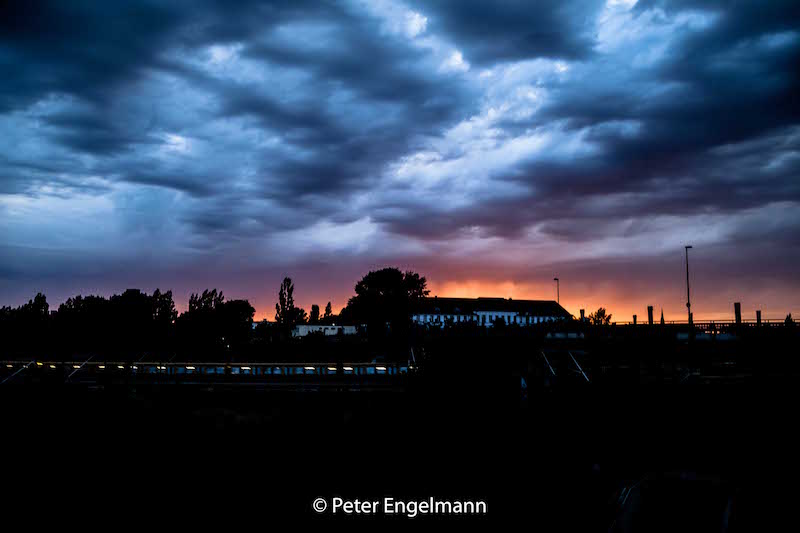Berlin, August 1, 2017: Spectacular Evening Sky
On August 1 again a hot air mass met a cold air mass over Germany. Subsequently, there was an air mass limit. Air mass limits are often the reason for severe weather events like extreme thunderstorms with tornados and flooding or downbursts.
(A good definition what an air mass is could be found at the UK met office:http://www.metoffice.gov.uk/learning/learn-about-the-weather/how-weather-works/air-masses.)
Severe storms were expected, the weather service also issued a warning for Berlin. In the afternoon and evening, a line of thunderstorms appeared. There was severe weather in Brandenburg and many other areas. However in Berlin after a short time of rain, the turbulent sky opened a bit and a red evening sun was illuminating the dramatically structured clouds.
Many people stopped and took pictures of the unusual weather situation. Of course, evening-glow happens a lot but this dramatic sky was extraordinary. One reason for this impressive sky is that if you have a weather situation with thunderstorms close or developing there is a chaos in the atmosphere. There are several levels in the lower and higher atmosphere with different clouds and there is a lot of circulation.
The impressive scenery lasted till it became dark. There was only a little wind and it was still very warm in the city during the night. Some sheet-lighting could be seen later but the bigger storms happened more in the South.
It was a relief after two severe storms with extraordinary flooding hit the city two times before.
But summer 2017 is very unpredictable in Europe. Two days later a very strong cell did damage in the South of Berlin and later in August Austria suffered from storms with heavy rain followed by mud-slides.
On the south-side of the Alps in Italy there are still heat-waves. As mentioned before these weather-patterns fit in the scenarios developed by scientists about effects of climate change.
There is a good-viewpoint between railway station “Gesundbrunnen” in Berlin and the well-known Bornholmer Straße. The pictures below were taken from a small bridge named “Schwedter Steig”. I had seen that bridge a couple of times when using the train. Its always useful particularly if you want to do weather-pictures to have an inventory of good view-points before, since if an interesting weather pattern occurs there is no time to search for a good place with a lot of open skies to take pictures or videos.









